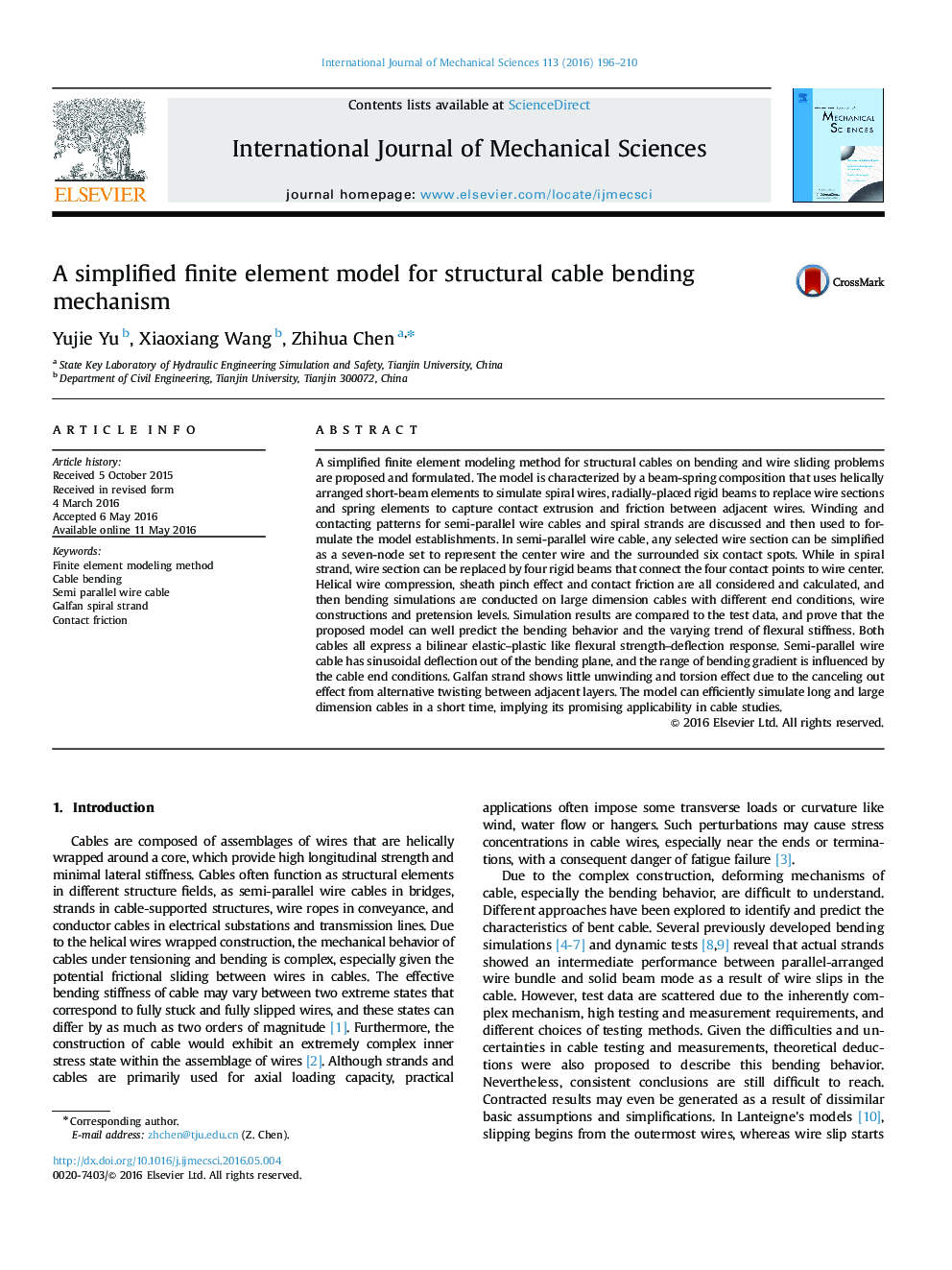| Article ID | Journal | Published Year | Pages | File Type |
|---|---|---|---|---|
| 7174102 | International Journal of Mechanical Sciences | 2016 | 15 Pages |
Abstract
A simplified finite element modeling method for structural cables on bending and wire sliding problems are proposed and formulated. The model is characterized by a beam-spring composition that uses helically arranged short-beam elements to simulate spiral wires, radially-placed rigid beams to replace wire sections and spring elements to capture contact extrusion and friction between adjacent wires. Winding and contacting patterns for semi-parallel wire cables and spiral strands are discussed and then used to formulate the model establishments. In semi-parallel wire cable, any selected wire section can be simplified as a seven-node set to represent the center wire and the surrounded six contact spots. While in spiral strand, wire section can be replaced by four rigid beams that connect the four contact points to wire center. Helical wire compression, sheath pinch effect and contact friction are all considered and calculated, and then bending simulations are conducted on large dimension cables with different end conditions, wire constructions and pretension levels. Simulation results are compared to the test data, and prove that the proposed model can well predict the bending behavior and the varying trend of flexural stiffness. Both cables all express a bilinear elastic-plastic like flexural strength-deflection response. Semi-parallel wire cable has sinusoidal deflection out of the bending plane, and the range of bending gradient is influenced by the cable end conditions. Galfan strand shows little unwinding and torsion effect due to the canceling out effect from alternative twisting between adjacent layers. The model can efficiently simulate long and large dimension cables in a short time, implying its promising applicability in cable studies.
Keywords
Related Topics
Physical Sciences and Engineering
Engineering
Mechanical Engineering
Authors
Yujie Yu, Xiaoxiang Wang, Zhihua Chen,
